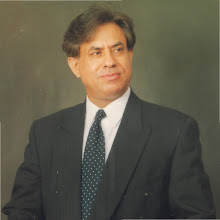Nanotechnology is all about examining the world at a millionth of meter and utilizing the ability to manipulate universe at a molecular perspective. The projected uses of nanotechnology are exciting and potentially life altering. All scientific disciplines are now meeting at a common level, the nanoscale, and their discoveries will more than likely change our world in a profound way.
The idea of nanotechnology begins with the idea of a molecular assembler, a device resembling an industrial robot arm but built on a microscopic scale. A general-purpose molecular assembler will be a jointed mechanism built from rigid molecular parts, driven by motors, controlled by computers, and able to grasp and apply molecular-scale tools. Molecular assemblers can be used to build other molecular machines–they can even build more molecular assemblers. Assemblers and other machines in molecular manufacturing systems will be able to make almost anything. In effect, molecular assemblers will provide the microscopic hands. To bridge all scales from atoms to material properties, mathematics is the language and the tool to orchestrate the principles of physics and chemistry.
Humanity will be faced with a powerful, accelerated social revolution as a result of nanotechnology. Within a few short years, and five billion trillion nano-robots later, virtually all present industrial processes will be obsolete as well as our contemporary concept of labor. Consumer goods will become plentiful, inexpensive, smart, and durable. Medicine will take a quantum leap forward. Space travel and colonization will become safe and affordable. For these and other reasons, global life styles will change radically and human behavior drastically impacted. What the computer revolution did for manipulating data, the nanotechnology revolution will do for manipulating matter, juggling atoms like bits.
Given the scope of the enterprise, it is not surprising that estimates of its eventual financial impact are large. Starting soon molecular engineering will emerge as a multi-trillion dollar industry that will dominate the economic and ecological fabric of our lives. Scientists agree that nanotechnology is likely to dominate 21st century.
At least 30 countries have initiated national activities in this field. The worldwide annual industrial production in the nanotech sectors is estimated to exceed $1 trillion in 10 to 15 years from now. America is leading the field. The total world research effort can be imagined as split in roughly equal parts between US, Japan, and Europe. They are investing billions of dollars in nanotechnology research, examining how and where nano-scale science can improve defense capabilities.
The military aspects of nanotechnology have gotten more attention: In a recent speech President Bush emphasized the role of technology in American military success, and noted that the USA was seeing weapons that are simultaneously more effective and less lethal. Some people wondered if this was entirely a good thing: weapons that are enormously powerful, but nonlethal, might tend to be used a lot. There seems to be a lot of military interest in nanotechnology, and for obvious reasons: mastery of nanotechnology could lead to the kind of military supremacy that mastery of steam power and repeating firearms gave the West in the 19th Century. On a sunny day, an area just a few paces on a side would generate a kilowatt of electrical power. With good batteries (and enough repaved roads and solar-cell roofing), present demands for electrical power could be met with no coal burning, no oil imports, no nuclear power, no hydroelectric dams, and no land taken over for solar power generation plants.
The story of nanotechnology in medicine will be the story of extending surgical control to the molecular level. The easiest applications will be aids to the immune system, which selectively attack invaders outside tissues. Immune machines will have no difficulty identifying cancer cells, and ultimately be able to track them down and destroy them wherever they may be growing. Destroying every cancer cell will cure the cancer.
Devices working in the bloodstream could nibble away at atherosclerotic deposits, widening the affected blood vessels. Cell herding devices could restore artery walls and artery linings to health, by ensuring that the right cells and supporting structures are in the right places. This would prevent most heart attacks.
Cell-herding capabilities should also be able to deal with the various forms of arthritis. Where this is due to attacks from the body's own immune system, the cells producing the damaging antibodies can be identified and eliminated. Then a cell-herding system would work inside the joint where it would remove diseased tissues, calcified spurs, and so forth, then rework patterns of cells and intercellular material to form a healthy, smoothly working, and pain-free joint. A similar process—but again, specially adapted to the circumstances at hand—could be used to strengthen and reshape bone, correcting osteoporosis.
When nanotechnology emerges from the world of ideas to the world of physical reality, we will need to be prepared. For now, drafting of new regulations seems premature. The government departments in medicine, economy, environment, and other issues of public policy to put nanotechnology on their agendas, join in debating and ultimately implementing sensible development policies.
Pakistan already has suffered for responding late to the Information Technology and consequently lost to India. The development of nanotechnology will seriously challenge the ability of our preparedness to respond quickly and to maintain the critical balance between dangers and benefits.
In the 1960s, the New Math that was introduced into American grade schools and junior high schools included extensive study of arithmetic using numbers written in something other than the familiar base 10. This was to prepare the Adults of Tomorrow for The Computer Age. Can Pakistan induct nanotechnology at campuses to prepare the Adults of tomorrow for nano-age? Or else, very soon Pakistan’s industry is going to find itself in a squeeze for nano know-how. (www.asifjmir.com)
A Distinct Candle is Extinguished!
-
“I am announcing, with a heavy heart, the sudden demise of my beloved
father, Asif Javed Mir, due to heart failure on 18th December,2013. I
request to ever...
11 years ago





No comments:
Post a Comment